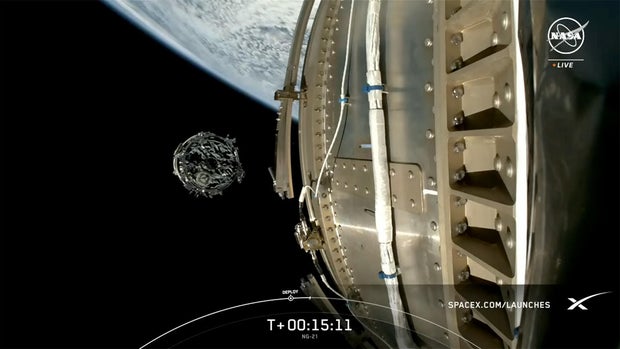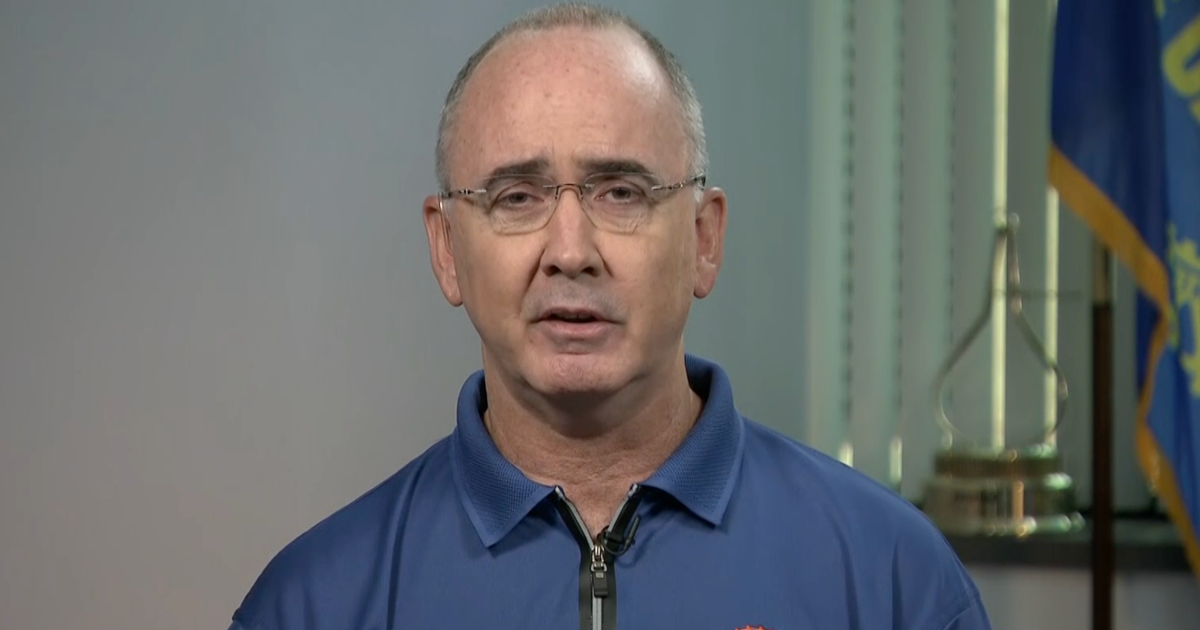SpaceX launches Northrop Grumman space station cargo ship into orbit
Running a day late due to weather, a SpaceX Falcon 9 rocket carrying a Northrop Grumman Cygnus cargo ship loaded with more than four tons of supplies, spare parts, fresh food and science gear blasted off from Cape Canaveral on Sunday, kicking off a two-day rendezvous with the International Space Station.
Despite an initially dismal 90% "no-go" forecast for Sunday, weather along Florida's Space Coast remained within safety limits and the workhorse Falcon 9, using a first stage making its tenth flight, roared to life at 11:02 a.m. EDT and quickly climbed away from the Cape Canaveral Space Force Station.
Thick clouds and electrical activity derailed a Saturday launch try, but that had no impact on the company's operations at Vandenberg Space Force Base in California where another Falcon 9 boosted 23 more Starlink internet satellites into orbit early Sunday. That set the stage for a second attempt to get the Cygnus off the ground from the east coast seven-and-a-half hours later.
The Florida launch went off without a hitch and after boosting the Falcon 9's second stage and the Cygnus cargo ship out of the lower atmosphere, the first stage fell away, reversed course and flew itself back to a tail-first landing at the Cape Canaveral Space Force Station to chalk up SpaceX's 53rd Florida touchdown and its 335th successful booster recovery overall.
The second stage, meanwhile, continued the climb to orbit on the power of its single Merlin engine. The Cygnus was released to fly on its own 14-and-a-half minutes after liftoff.
The Cygnus launching, SpaceX's 76th so far this year, was the second carrying a Northrop Grumman cargo ship. In the wake of Russia's invasion of Ukraine, Northrop Grumman opted to replace its Antares 200-series rockets, equipped with a Ukrainian-built first stage powered by Russian engines, with a new all-American launcher.
To meet its contract obligations with NASA, Northrop Grumman purchased three Falcon 9 flights from SpaceX while the company presses ahead with the development of a new rocket.
If all goes well, the Cygnus, named in honor of Challenger commander Francis "Dick" Scobee, will catch up with the space station early Tuesday, pulling up to within about 30 feet of the outpost and standing by for capture by the lab's robot arm around 3:10 a.m.
From there, flight controllers at the Johnson Space Center in Houston will operate the arm remotely, moving Cygnus in for berthing at an Earth-facing port on the central Unity module.
On board: 2,251 pounds of crew supplies, 2,790 pounds of research gear, 3,439 pounds of station hardware, 95 pounds of spacewalk equipment and 29 pounds of computer components, along with fresh fruit, vegetables and coffee for the station crew.
"We have over 800 kilograms of science flying up, and the science supports areas of human health, fundamental science, technology demonstration and developments in in-space manufacturing for benefits here on Earth," said Meghan Everett, ISS deputy chief scientist.
The Cygnus also will deliver clothing and other personal items for Starliner commander Barry "Butch" Wilmore and co-pilot Sunita Williams, who blasted off June 5. They originally planned to spend a little more than a week aboard the space station during the Boeing spacecraft's first piloted test flight.
But as it turned out, their mission has been repeatedly extended because of testing and analysis in the wake of multiple helium leaks in the Starliner's propulsion system and problems with maneuvering thrusters.
Sunday marked Wilmore and Williams' 60th day in space, with no decision yet on whether they'll be cleared to return to Earth aboard the Starliner or whether they might eventually have to hitch a ride back aboard a SpaceX Crew Dragon capsule.
In the meantime, "we do have a few items that are going up (on the Cygnus) because we do like to keep our options open," Bill Spetch, ISS operations integration manager, told reporters Friday. "So we have some clothes, we have some personal food items for them, things like that."
NASA and Boeing managers plan to meet this week to discuss Starliner options, when the next long-duration station crew will take off aboard a SpaceX Crew Dragon and how Wilmore and Williams might figure into those calculations if a return aboard the Starliner is eventually ruled out.





